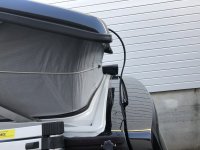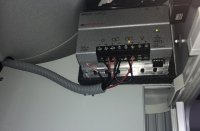- Home
- Forums
- VW California T5 T6 & T6.1 Specific Sections
- VW California T5,T6 & T6.1 Specific Sections
- Solar Panels
You are using an out of date browser. It may not display this or other websites correctly.
You should upgrade or use an alternative browser.
You should upgrade or use an alternative browser.
MattBW
Here to help
Super Poster
Lifetime VIP Member
There is an inverter in the California limited to 150w but that should be a different socket. The mains socket should be separate and only work on hookup.can you Check it? in my california i have 230v Socket working without being on hookup. i mean that i can use small watt for example laptop running from these socket straight from lasure batteries. ?? is it original or i have some modification in installation? can someone check in your cars?
WelshGas
Retired after 42 yrs and enjoying Life.
Super Poster
Lifetime VIP Member
You could but it would probably mess up the BlueMotion Electronics that is part of the Euro 5/6 Emissions Control that VW use.another question, meaby it is good idea to connect mppt charger somewhere between alternator and first battery? it would in my opinion charge all batteries using original built in california charger?
WelshGas
Retired after 42 yrs and enjoying Life.
Super Poster
Lifetime VIP Member
Can you post a picture of which 230v Socket is Live when Not On Mains Hookup?can you Check it? in my california i have 230v Socket working without being on hookup. i mean that i can use small watt for example laptop running from these socket straight from lasure batteries. ?? is it original or i have some modification in installation? can someone check in your cars?
Alibee
8892
VIP Member
There is an inverter in the California limited to 150w but that should be a different socket. The mains socket should be separate and only work on hookup.
Bottom (EU) socket on my Ocean is live 230v via 150w inverter, but top socket (UK) is only live on hook-up. I thought this was normal on all Oceans?
California4x4
Top Poster
VIP Member
Can someone please post a picture of what it looks like from the interior. I've searched the forum but no luck, worried about dangling cables etc.
Sean Gardiner
- Messages
- 7
Hi, I'm just looking at doing a similar setup on my California roof with ALu backed semi flexible panels, and favour the slick look you have in the photo. Wondered if you had any overheating issues with the panels being stuck onto the roof.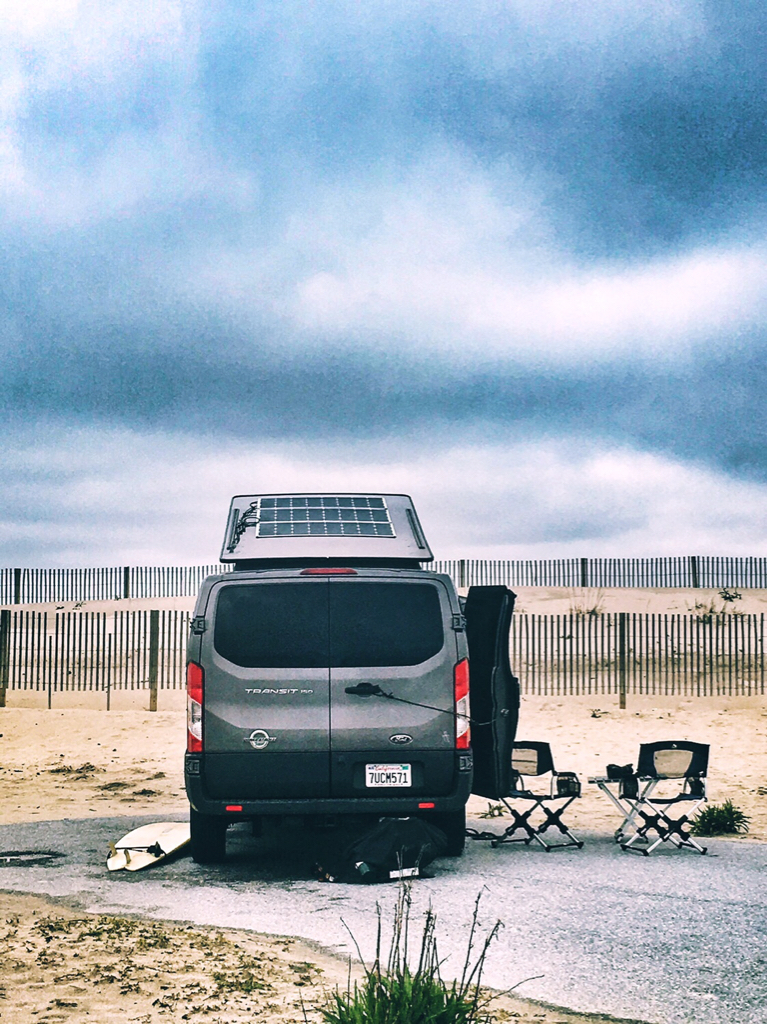
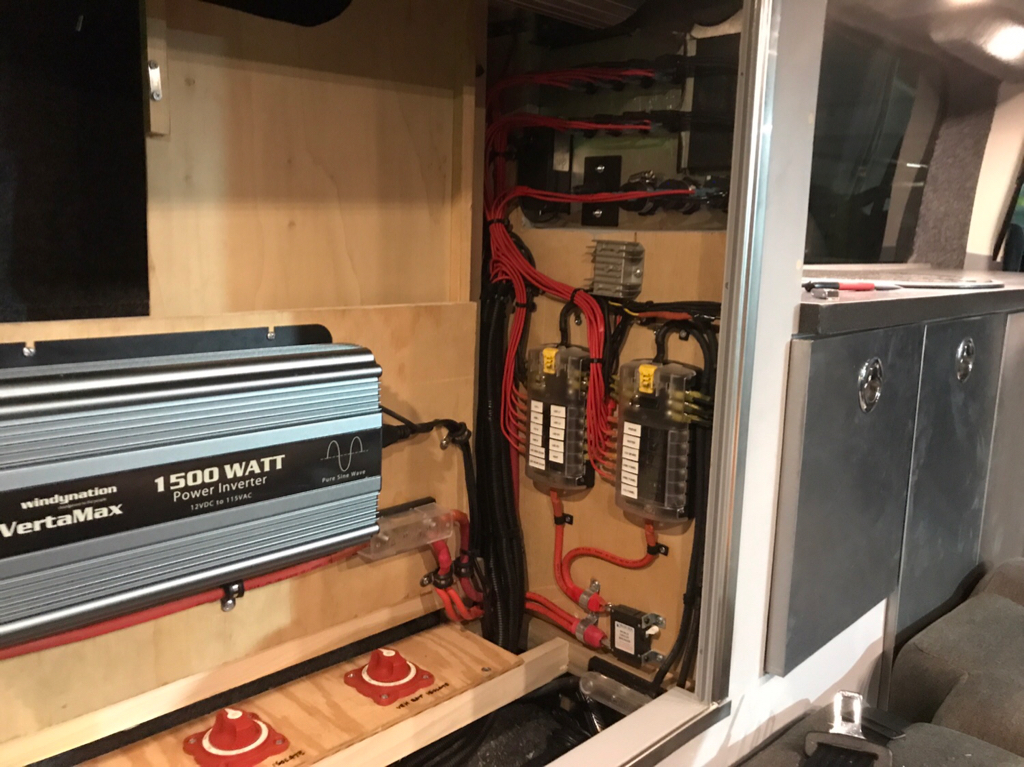
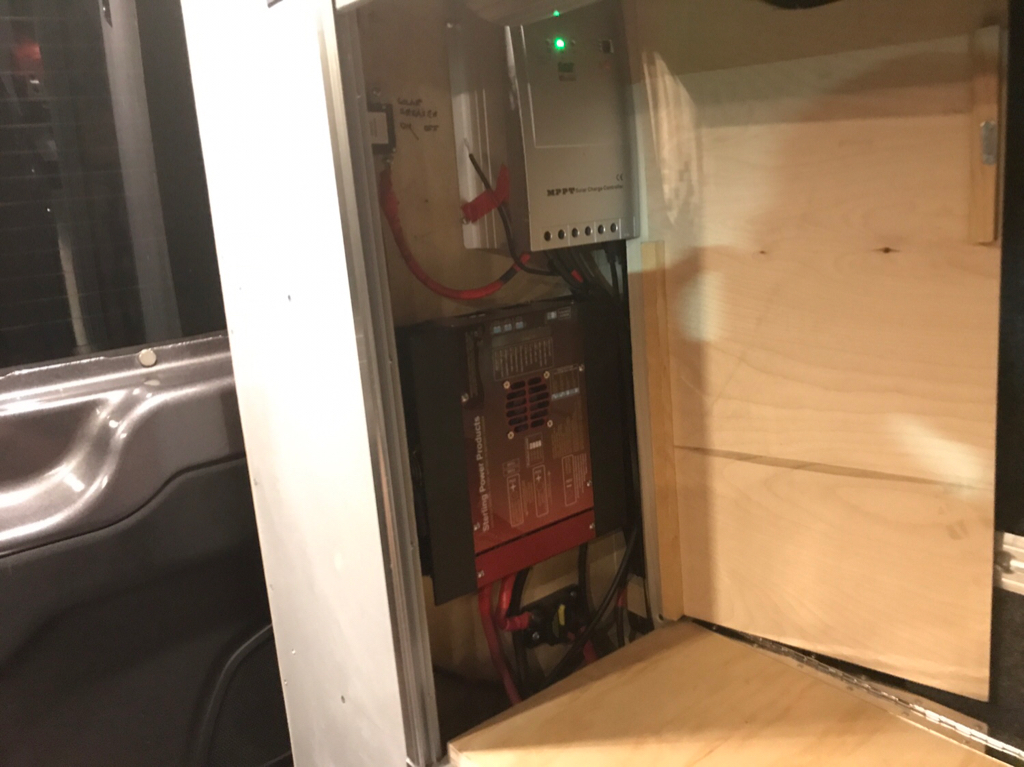
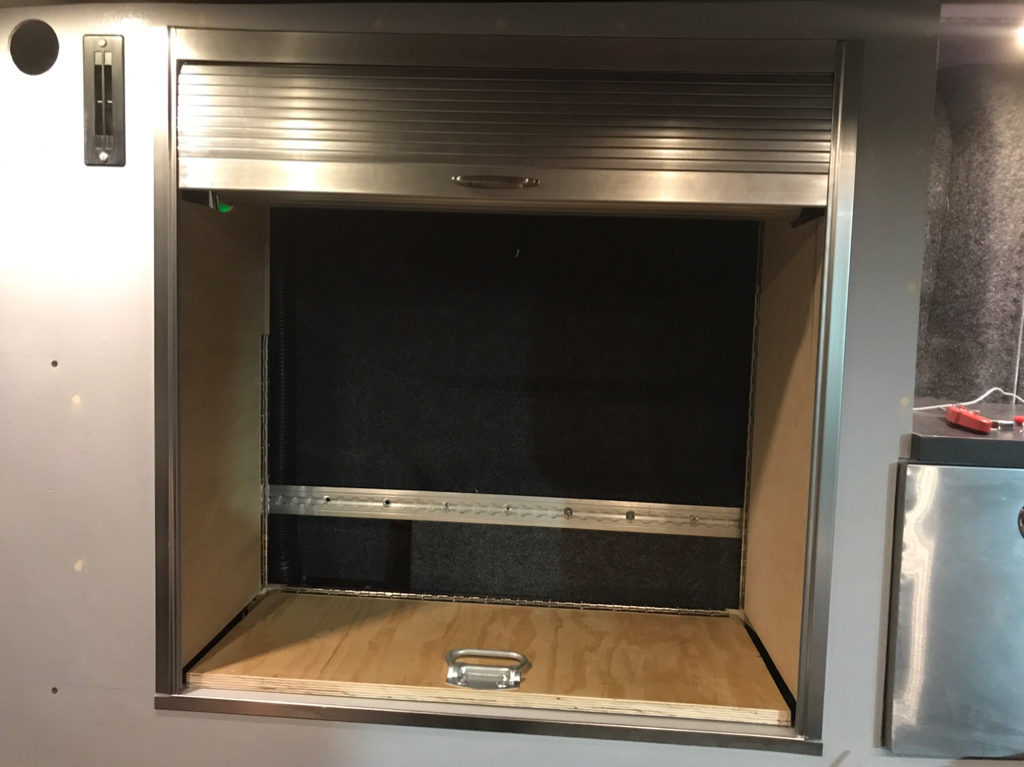
I have not done a solar setup on a California yet (I'm still waiting for mine) however I did build a completely off-grid campervan in the States when I was there for 9 months, so have learned quite a lot. This setup has 300watts of solar, a MPPT charger with remote controller, 200Ah AGM battery, battery to battery charger, 1500w inverter. All added up to about £1,200. The solar system was about half of that.
Lessons learned - It is much cheaper to buy individual components than a ready made pack. However the systems being bought and fitted here are giving a really clean look.
The main point I would like to offer, is that any shadow across the panels can significantly reduce the output. So anyone that is planning to carry boards or anything on their roof should consider this when installing. This doesn't mean it cant be done though. The good thing is when you need to carry anything, you are normally driving and therefore charging your auxiliary battery with your alternator. When you park up and set up your off-grid base, take the board or canoe off your bars and your panel will work perfectly.
If you are planning on carrying anything I would consider putting your roof bars on and seeing where your panels are best placed so that the bars (when empty) do not cast a shadow over the panels.
I will definitely be fitting a solar system to mine. I am likely to go with a two panel system with MPPT charger and an app. I would be happy to buy the same system as many here too. It looks ideal.
Sent from my iPhone using Tapatalk
Also any recommendations for adhesive / pad solutions?
Regards, Sean
California4x4
Top Poster
VIP Member
I fixed the panels to the roof with high temperature Velcro so they could be removed if needed and so that no drilling was required. I also thought it would be easier to separate the Velcro and then try to remove the Velcro from the roof in a way that left little residue, rather than having the panel stuck directly to the roof. If you used this method and needed to remove the Velcro for a roof corrosion issue, I have found that t-cut type polish is effective at removing anything stuck to paint.Hi, I'm just looking at doing a similar setup on my California roof with ALu backed semi flexible panels, and favour the slick look you have in the photo. Wondered if you had any overheating issues with the panels being stuck onto the roof.
Also any recommendations for adhesive / pad solutions?
Regards, Sean
I used the vehicle in high temperatures in the USA. I don’t know if their efficiency was reduced in high temperatures as 300 watts always produced more power than I could consume in 24 hours. They definitely got hot.
Multiple panels requires more complex cable runs but most MPPT controllers will cope with multiple panels being connected in parallel as I did here, but check the max voltage that will be created against the spec of your chosen charge controller.
I used large (8 or 10 gauge I think) wiring and standard solar external connectors so again they could be removed if required. If this isn’t required, panels could be physically wired together in parallel and many people use smaller gauge wires.
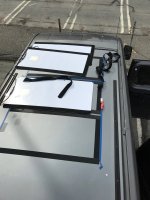
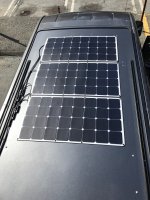
I sold the van a few years ago when I moved to Norway but I see it on Instagram every now and again with the same panels still attached, which is reassuring.

Sean Gardiner
- Messages
- 7
That's great info, thanks so much for taking the time to reply in so much detail, with the pics.
Sean
Sean
Similar threads
- Replies
- 25
- Views
- 13K
- Replies
- 16
- Views
- 5K
D
- Home
- Forums
- VW California T5 T6 & T6.1 Specific Sections
- VW California T5,T6 & T6.1 Specific Sections
- Solar Panels

About us
The VW California Club is the worlds largest resource for all owners and enthusiasts of VW California campervans.



